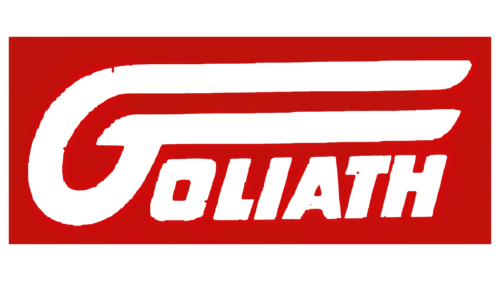The Goliath logo appears to have wings made of ideas and new developments. The emblem embodies passion and vitality. The logo promises safe transportation and maximum protection.
Goliath: Brand overview
The German automobile manufacturer Goliath emerged in 1928 in Bremen. It was the brainchild of Carl F.W. Borgward and Wilhelm Tecklenborg and operated under the broader umbrella of the Borgward group. At its inception, Goliath primarily manufactured three-wheeled delivery vehicles and trucks, many of which ran on single-cylinder engines.
During the 1930s, Goliath ventured into the passenger car market, targeting the broader population with reasonably priced vehicles. Notable models from this era included the Goliath Pionier and the GP700. However, the progression of World War II saw a shift in their focus. The firm predominantly produced military vehicles and equipment during this period, and unfortunately, by 1944, their manufacturing facilities were severely damaged due to bombings.
Post-war, the company reverted to its roots, making more passenger cars. They garnered success with notable models like the Goliath 1100 and the Hansa 1100. By the mid-1950s, they had rolled out approximately 65,000 cars. However, the golden days were short-lived. By 1961, escalating expenses and dwindling sales took a toll on Goliath, leading to its dissolution. This was a part of the larger disintegration of the Borgward group. Over its three-decade existence, Goliath had manufactured around a quarter-million vehicles.
Meaning and History
What is Goliath?
Goliath-Werke Borgward & Co., a German car manufacturer, notably impacted the automotive world from 1928 to 1961. The brainchild of Carl F. W. Borgward and Wilhelm Tecklenborg, this Bremen-based company made a name for itself by manufacturing three-wheeler cars, trucks, and mid-size cars, all marketed under the Goliath brand. Although the company’s existence was brief, its influence in the German automotive sector endures.
1928 – 1961
The Goliath emblem, used from 1928 to 1961, features white lettering on a rich red background. This design draws attention through a strong visual contrast. The white letters symbolize the company’s advanced technical developments and innovations.
Goliath was chosen deliberately, drawing from the biblical hero known for his impressive size and incredible strength. This name emphasized the characteristics of the vehicles, especially as the company started with trucks. Goliath conveyed power and reliability, aligning with the essence of the company’s products.
The emblem includes an interesting detail: the ends of the letter “G” extend forward, creating a double underline above the word. This element resembles a protective shield, suggesting a strong roof over the driver’s head. It symbolizes the protection and reliability provided by Goliath vehicles.
The use of high-strength alloys for the bodies and modern Bosch engines ensured high performance and durability. Customers received dependable vehicles, reinforcing the company’s reputation in the market.




